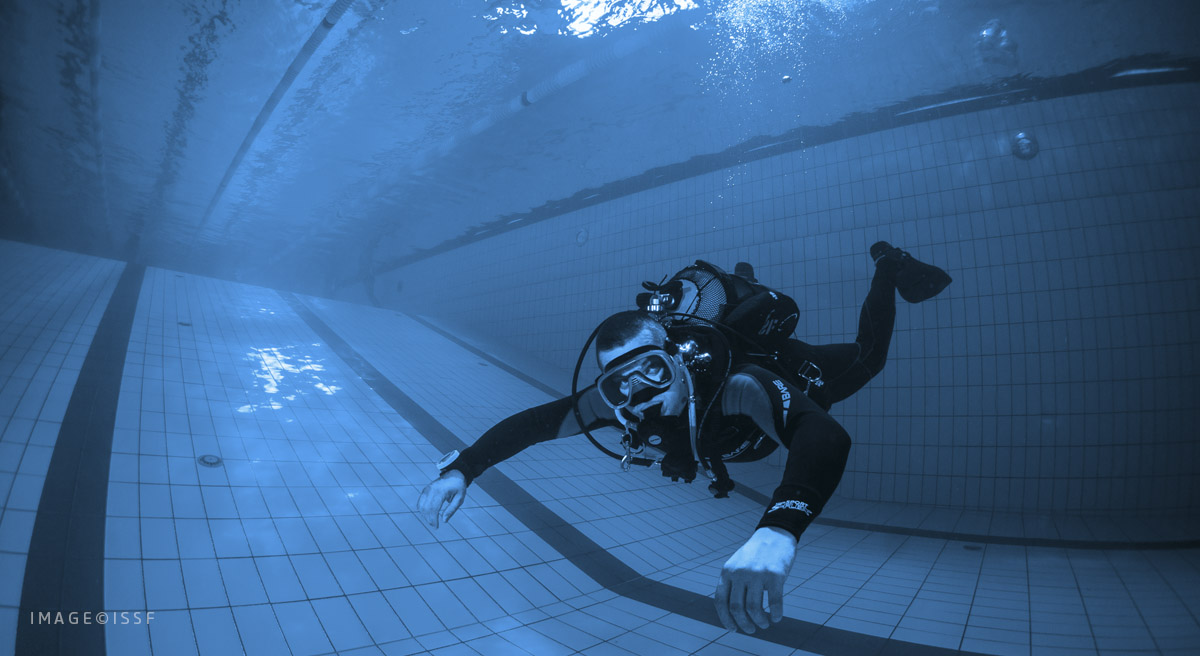OWD IN A WING SET-UP?
The wing with the harness is currently the most modern, available buoyancy compensator set for divers. It is difficult to find any wing related weaknesses in comparison with other buoyancy compensators, such as typical jackets or so-called hybrids. So why not to use them from the beginning of the diving path? What does ISSF mean by the “recreational wing with a harness”? Well, the wing is thought to be the buoyancy bag connected to a backplate and the harness with necessary D-rings attached to it, as well as the tank adapter with cam bands and weight pockets.
The backplate is usually made of aluminum, steel or carbon, and is designed to balance the equipment weight worn on the diver’s back and combine all other elements of the gear set. Thanks to the materials used, it is also strong and resistant to damage. In the case of carbon and aluminum materials it is also very light and bears comparison to jackets, which is relatively important when travelling by plane. The buoyancy device offers the best possible buoyancy, while keeping the optimal size qualities in relation to cylinders used. They often vary roughly between 15-19 kg, which is case of jackets is difficult to achieve or even impossible especially with smaller sizes. Another important feature of the wing type buoyancy device is the idea of gas circulating through the device what refers to a horizontal diving position underwater. This definitely helps to maintain the proper trim. It also supports the OWD diver’s movement and hovering underwater.
ISSF allows three different types of harness to be used in recreational diving:
– adjustable straps and plastic quick-release buckles
– a metal buckle on the left shoulder strap,
– a single continuous piece of webbing that cannot be unbuckled easily.
The type of harness is selected individually by the instructor, in regards to the diver’s aptitude and his/her planned diving career. Each type of the harness, also includes a waist belt and crotch strap hold the diving system in place and weight pockets. ISSF, does not recommend the use of weight belt due to: too much strain placed on the lumbar spine segment , abdominal region oppression, difficult trimming (usually impossible in a wet suit), and the possibility of weight belt and buoyancy loss underwater. There have also been cases of a dropped weight belt while passing it on the boat, causing a threat to divers staying below. Additional trimming pockets can also be used with a wing and a single tank adapter. With this solution, even a novice diver can easily achieve a proper position by placing a part of the weight on the lower or upper tank cam band. On the purchase of a good quality wings there is a possibility to match the length of the inflator to the diver’s posture. The correct length of the inflator tube makes the set operation easy.
At the start of diving adventure almost no one can foresee his or her diving path; they will stop at the basic course or maybe, with time passing, they will reach the technical diver level. Having stopped at the Open Water Diver 20 level, one will definitely appreciate the advantages of the buoyancy wings and their modular design. A well trained diver will be free to perform his or her dives under any conditions, with additional buoyancy for emergency situations. If the diver finally chooses to embark on the technical path, he will be better trained in handling and operating the wing-type set than those who have just changed the buoyancy compensation device. The change in equipment means just the increased wing lift capacity. The harness one got used to will remain unchanged. Instead of struggling with a new gear set, the diver will be ready to focus on other elements relevant to a given training level. To sum up, while the safety and training of the diver are definitely up, the cost of the equipment change will go down.

Add Comment